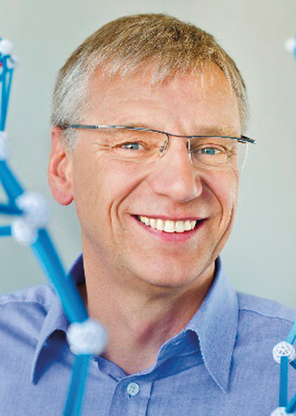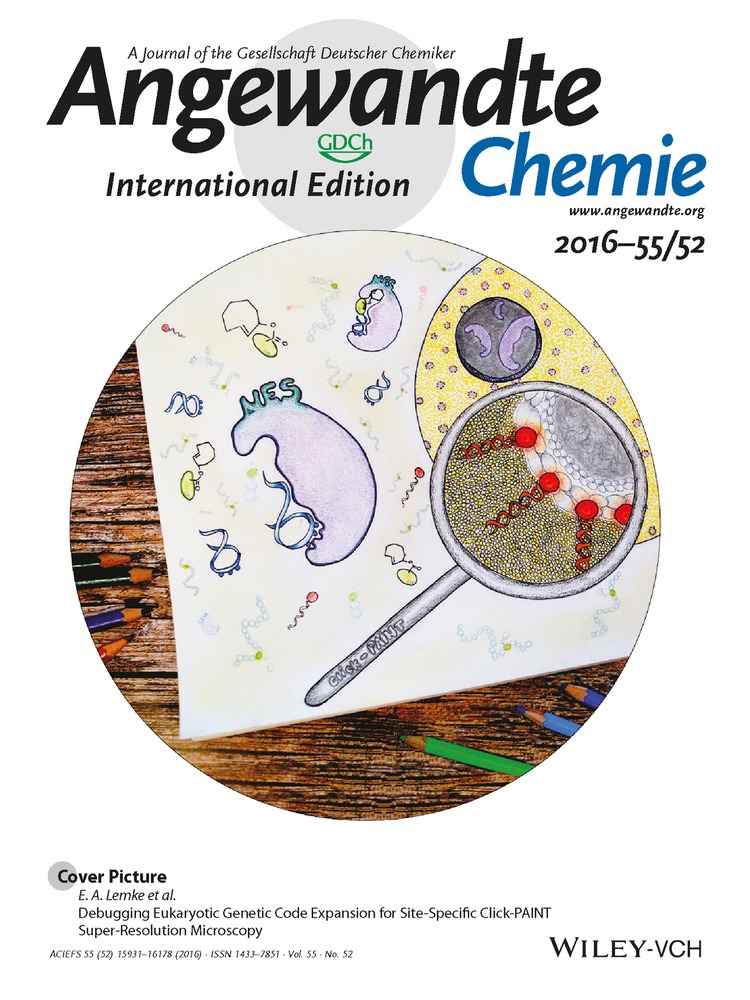Thomas F. Fässler
Graphical Abstract
Thomas F. Fässler
The author presented on this page has published more than 25 articles since 2000 in Angewandte Chemie, most recently:
“Zintl Clusters as Wet-Chemical Precursors for Germanium Nanomorphologies with Tunable Composition”: M. M. Bentlohner, M. Waibel, P. Zeller, K. Sarkar, P. Müller-Buschbaum, D. Fattakhova-Rohlfing, T. F. Fässler, Angew. Chem. Int. Ed. 2016, 55, 2441; Angew. Chem. 2016, 128, 2487.
“On the Formation of Intermetalloid Clusters: Titanocen(III) Diammin as a Versatile Reactant Toward Nonastannide Zintl Clusters”: C. B. Benda, M. Waibel, T. F. Fässler, Angew. Chem. Int. Ed. 2015, 54, 522; Angew. Chem. 127, 532.
-
- Date of birth:
-
- February 7, 1959
-
- Position:
-
- Chair of Inorganic Chemistry with Focus on Novel Materials, Technische Universität München
-
- E-mail:
-
- [email protected]
-
- ORCID:
-
- 0000-0001-9460-8882
-
- Homepage:
-
- http://www.ch.tum.de/faessler
-
- Education:
-
- 1984 Examination in Chemistry and Mathematics, University of Konstanz 1988 PhD supervised by Prof. Dr. Gottfried Huttner, University of Heidelberg 1989–1990 Postdoc with Prof. Dr. Jeremy Burdett, University of Chicago 1991–1999 Research assistant (habilitation mentored by Prof. Dr. Reinhard Nesper), ETH Zurich
-
- Awards:
-
- 2013 Egon Wiberg Lecture, Ludwig-Maximilians-Universität München; 2015 Wilhelm Klemm Prize, Gesellschaft Deutscher Chemiker (GDCh; German Chemical Society)
-
- Current research interests:
-
- Synthesis, characterization, and theoretical description of materials that are based on inorganic solids und molecular compounds. Main group element based materials at the border of molecular compounds and solids are investigated using intermetallic phases and compounds that contain preformed soluble atom clusters. Solution-based synthetic methods for atom clusters of semiconducting and metallic elements, for which we introduced the term “intermetalloid cluster”, complement the investigated classes of materials. The compounds under investigation are potential candidates for materials for energy storage (anode materials, solid-state electrolyte), energy transformation (thermoelectric, photovoltaic) and superconductors. State-of-the-art quantum chemical calculations including band structures and the real space analysis of the chemical bonding corroborate the experiments.
-
- Hobbies:
-
- Skiing, singing, playing the guitar and washboard, traveling
My not-so-secret passion is riding motorcycles.
If I won the lottery, I would go on a round-the-world trip with my family.
The most amusing chemistry adventure in my career was skiing off-piste with my PhD adviser Gottfried Huttner.
My top three films of all time are The Blues Brothers, The Great Dictator, and Harold and Maude.
The downside of my job is with each finished paper, another ten ideas are born that I would like to explore.
My favorite piece of music is the soundtrack to The Blues Brothers.
My favorite quote is “Fundamental research is applied research in the long term” (Eduard Zintl).
The biggest problem that scientists face is to realize the conservative and sustainable utilization of natural resources.
What I look for first in a publication are the formulae and figures.
The most important thing I learned from my parents is to respect nature.
I became a chemist as chemistry, which in contrast to mathematics, my second passion, also requires hands-on and mechanical skills. Moreover, there are always unexpected and thus exciting results!
My most exciting discovery to date has been the occurrence of double-wall nanotubes in a unique Na–Cu–Sn alloy (thanks to my co-worker). The structure shows that one compound can simultaneously be a directional one-dimensional conductor and saltlike semiconductor.
My greatest achievement has been to be the first and only student that studied both subjects chemistry and mathematics at the University of Konstanz.
My worst nightmare is that somebody dictates the research subjects that I can or should work on.
The most exciting thing about my research is crossing the frontiers between solid-state chemistry and molecular chemistry on a daily basis.
My biggest motivation is to discuss planned experiments and results with my co-workers.
I lose track of time when we find a new, complex, and aesthetically attractive structure, and try to understand its topology and electronic properties.
The best advice I have ever been given is to do a postdoc in Chicago (because of my host Jeremy Burdett, but also strongly because of the fantastic city).
I can never resist the inventiveness of nature.
Has your approach to chemistry research changed since the start of your career?
Yes—whereas at the beginning of my career I was interested in acquiring only fundamental knowledge, I now tend more and more to make use of that knowledge. With each experiment we perform, we force nature to give us some more insight and this step is necessary to retrieve nature's secrets. However, I now like to use the constant increase of our level of knowledge to gently and sustainably raise the quality of life—and chemistry provides the best options to do so.
What advice would you give to up-and-coming scientists?
Follow those ideas you are deeply interested in and do not exclusively follow themes that are in vogue. Certainly mainstream fields might raise numerical parameters such as number of citations, and this apparent recognition (regrettably) helps you to establish yourself faster. However keep in mind, it is worth to concentrate on matters in depth. Maintain curiosity, use your freedom for imagination and innovation to make future scientific advancements, and look out for new paths.
My 5 top papers:






